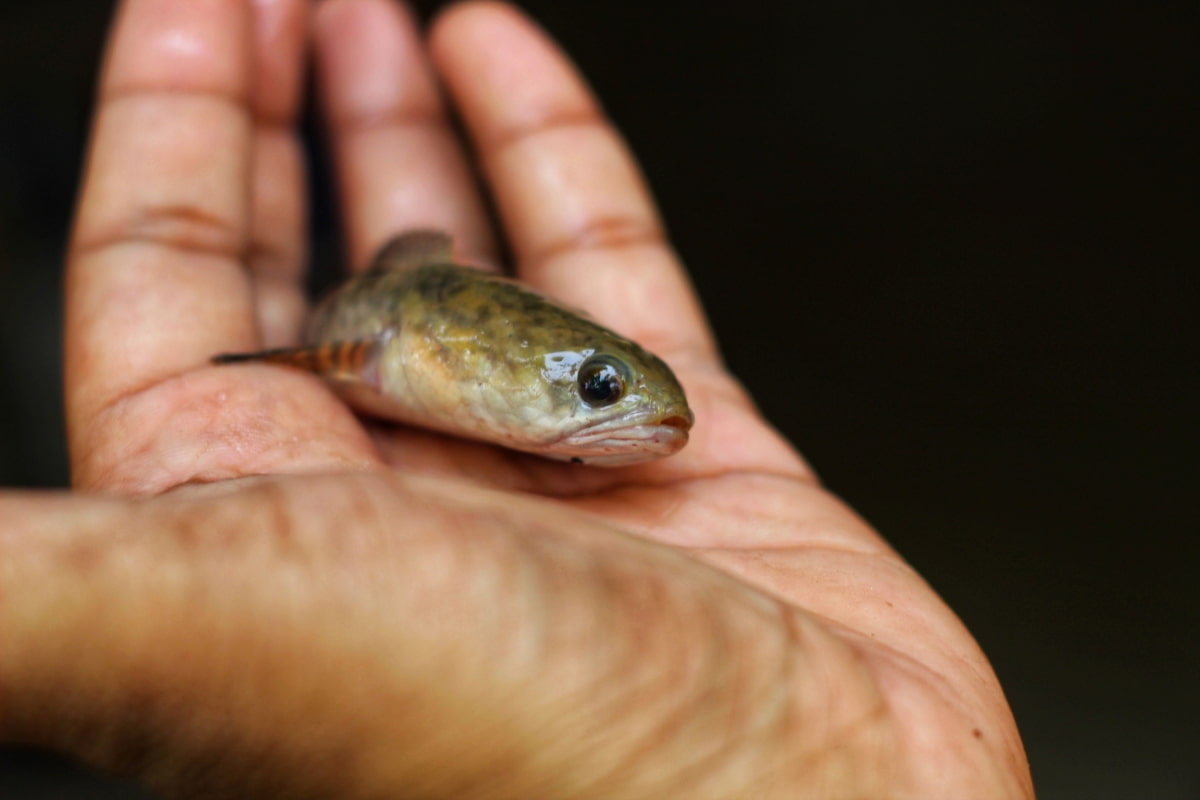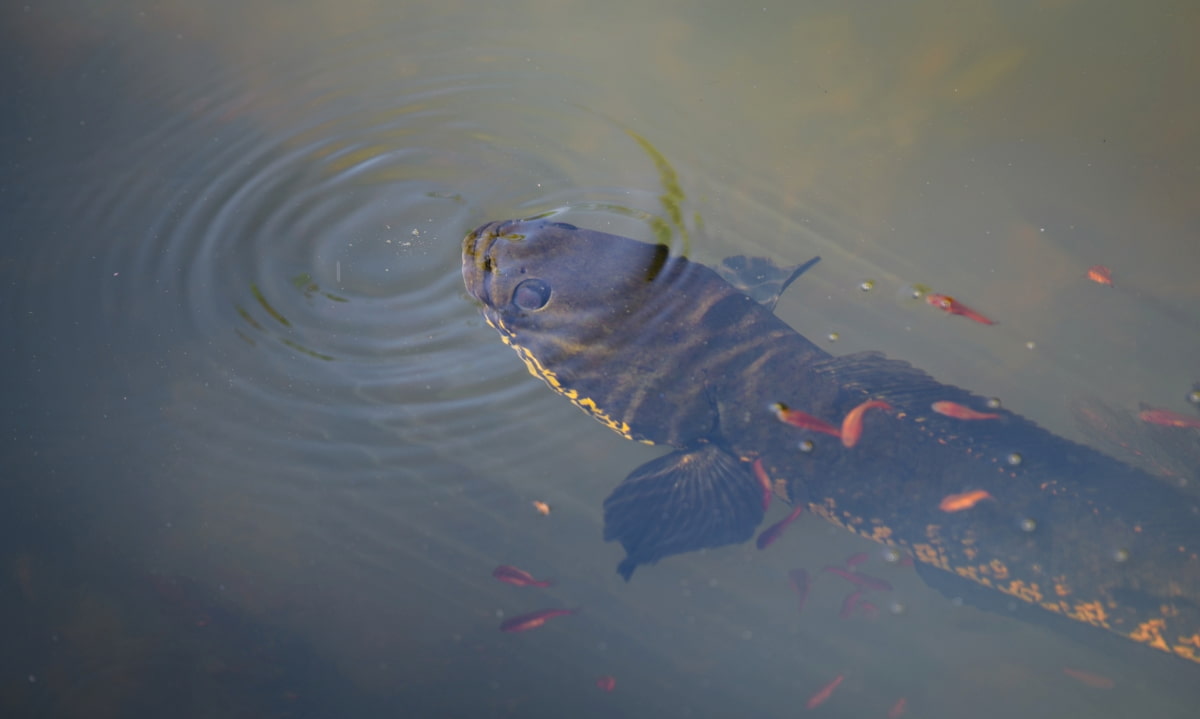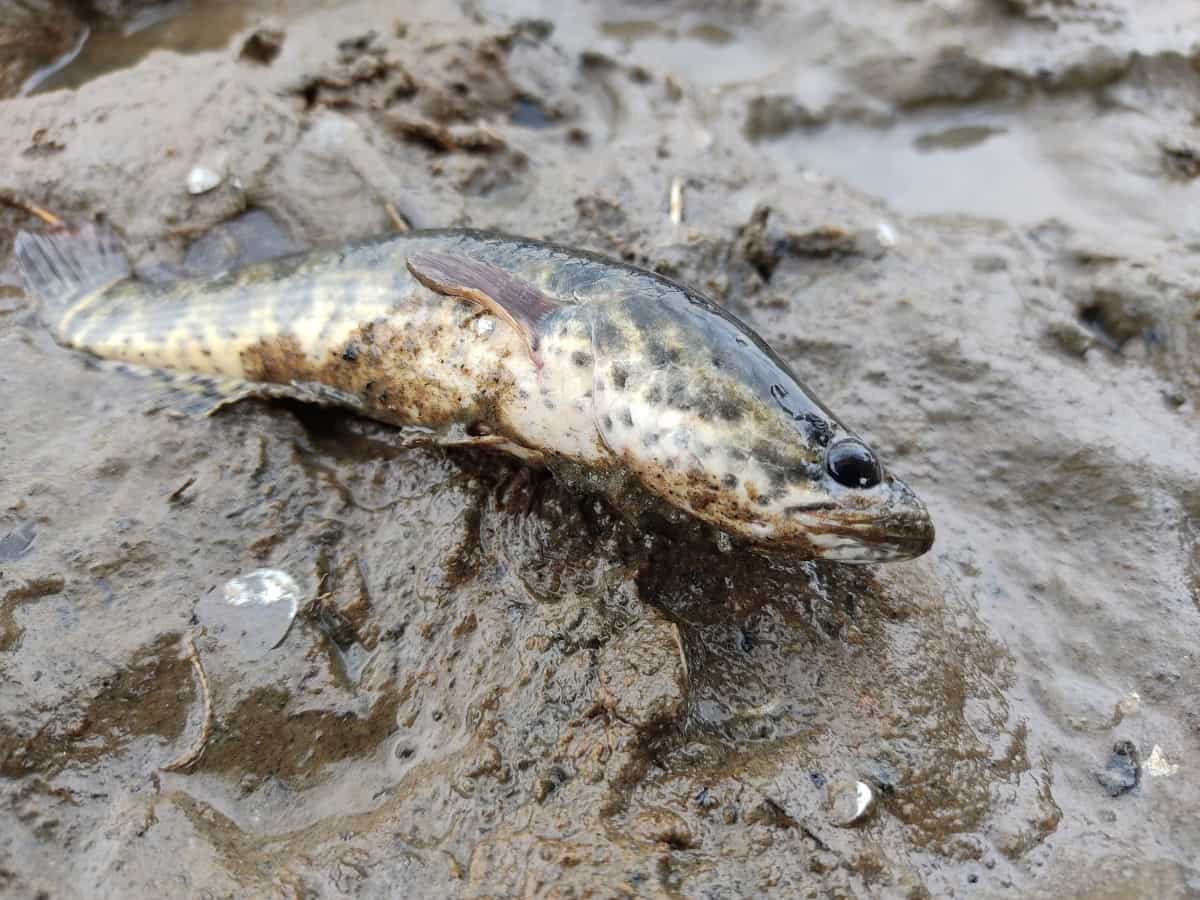Murrel culture in ponds involves the systematic cultivation of murrel fish, contributing to sustainable aquaculture practices. This practice optimizes pond conditions, ensuring a conducive environment for the growth of murrel. Through strategic feeding and monitoring, farmers enhance fish health and yield. Murrel culture in ponds aligns with eco-friendly principles, fostering a balanced aquatic ecosystem.

Murrel Culture in Ponds
Introduction to Murrel Culture in Ponds
Murrel is a common name for several species of freshwater fish belonging to the family Channidae, also known as snakehead fish. Murrel is one of the most popular and tasty fish in India, especially in the states of Telangana, Andhra Pradesh, Tamil Nadu, Punjab, Haryana, Bihar, and the Eastern Region. Murrel is also considered to be an economical and suitable candidate for aquaculture, as it can survive in low dissolved oxygen levels, withstand adverse weather conditions, and fetch high market value.
The spotted snakehead (Channa punctatus), the striped murrel (Channa striatus), and the great snakehead murrel (Channa marulius) are the most important murrel species for farming in India. In this blog, we’ll talk about the pros and cons of raising murrelets in ponds, as well as how to set them up, care for them, feed them, keep the water clean, keep them from getting diseases, collect them, and sell them.
Benefits of Murrel Culture in Ponds
Murrel culture in ponds offers numerous benefits for farmers and consumers. It is a high-value food fish that can be marketed live, ensuring freshness and quality. Murrel culture can be done in small backyards, shallow ponds, or community ponds, reducing land and water resource costs. Its high feed conversion efficiency allows for faster growth with less feed input. Murrel is high in protein and low in fat, making it a healthy, nutritious food. It can also be processed into value-added products with high demand and shelf life.
Setting Up a Murrel Pond for Cultivation
- Select a site that has a good-quality water supply and drainage facilities.
- Construct a pond of 0.1-0.2 ha area with a water depth of 1 to 1.5 m. Lining can be applied to the pond bottom and the dyke to prevent water seepage.
- Apply organic manure like cow dung or poultry litter at the rate of 5-10 tonnes/ha to enrich the pond bottom with natural food organisms for murrel.
- Fill the pond with water and allow it to stabilize for 15-20 days before stocking.
Choosing the Right Murrel Species for Pond Culture
The choice of murrel species for pond culture depends on the availability of seeds, market preference, and climatic conditions. The striped murrel (Channa striatus) is the most widely cultured species in India, as it has a standardized culture technology, high growth rate, wide distribution, and high consumer preference. The great snakehead murrel (Channa marulius) is also cultured in some regions, as it has a larger size and higher market value. The spotted snakehead (Channa punctatus) is mainly cultured in the North Eastern Region, as it is endemic to that region and has a local demand.
In case you missed it: How Start Snakehead/Murrel Fish Farming in 10 Steps

Pond Management Techniques for Murrel Culture
- Stocking: The advisable stocking size for grow-out culture is 8-12 cm or 12-20 g, with a stocking density of 10,000-15,000/ha. The expected growth in a year is 600-700 g over 8-10 months.
- Weeding: The pond should be kept free from aquatic weeds that may interfere with the feeding and movement of murrel. Manual, mechanical methods can be used to remove the weeds periodically.
- Aeration: The pond should be aerated regularly to maintain adequate dissolved oxygen levels for murrel. Aeration can be done by using paddle wheels, air pumps, or fountains.
- Fertilization: The pond should be fertilized with organic or inorganic fertilizers to enhance the natural food production for murrel. Organic fertilizers like cow dung or poultry litter can be applied at the rate of 2-3 tonnes/ha/month. Inorganic fertilizers like urea or superphosphate can be applied at the rate of 50-100 kg/ha/month.
Feeding and Nutrition in Murrel Pond Culture
Murrel, a predatory fish, requires supplementary feeding for growth and production. Feed type should be animal-based, such as fish meal, meat meal, blood meal, earthworms, snails, frogs, and insects. The feed size should match the murrel’s mouth size and can be gradually increased as the fish grows.
The feed quantity should be based on the murrel’s appetite and biomass and adjusted based on water temperature, dissolved oxygen, and weather conditions. The feeding rate should be 5-10% of the body weight per day. The feed frequency should be 2-3 times a day, preferably in the morning and evening, and evenly distributed to avoid competition and wastage.
Water Quality and Oxygenation for Murrel Pond Culture
- Temperature: The optimum water temperature for murrel culture is 25-35°C. The water temperature should not be more than 40°C or fall below 15°C, as it may affect the feeding and metabolism of murrel.
- pH: The optimum pH range for murrel culture is 6.5-8.5. The pH should not be too acidic or alkaline, as it may affect the skin and gills of murrel.
- Dissolved oxygen: The minimum dissolved oxygen level for murrel culture is four mg/l. The dissolved oxygen level should be maintained by aeration, water exchange, or liming.
- Ammonia: The maximum ammonia level for murrel culture is 0.1 mg/l. The ammonia level should be reduced by water exchange, aeration, or biological filtration.
- Nitrite: The maximum nitrite level for murrel culture is 0.1 mg/l. The nitrite level should be reduced by water exchange, aeration, or biological filtration.
In case you missed it: Fish Farming Project Report: Production Economics, Cost, and Profit Analysis

Disease Prevention and Treatment in Murrel Pond Culture
Murrels are susceptible to various diseases caused by bacteria, fungi, parasites, or viruses. Common diseases include bacterial diseases caused by Aeromonas, Pseudomonas, Vibrio, or Streptococcus bacteria, fungal diseases caused by Saprolegnia or Achlya fungi, parasitic diseases caused by protozoa, trematodes, cestodes, or nematodes, and viral diseases caused by iridovirus or rhabdovirus.
To prevent and treat these diseases, it is recommended to maintain good water quality and hygiene in the pond, quarantine and disinfect seed before stocking, avoid overstocking and overfeeding, use prophylactic treatments like salt, potassium permanganate, or formalin, and use specific treatments like antibiotics, antifungals, or antiparasitics as prescribed by a veterinarian.
Harvesting and Marketing of Murrel in Pond Culture
- Murrel can be harvested after 8-10 months of culture when they reach a marketable size of 600-700 g.
- Partial harvesting: This involves removing a portion of the fish from the pond using nets or traps. This helps to reduce the biomass and improve the growth of the remaining fish.
- Complete harvesting: This involves draining the pond completely and collecting all the fish using nets or baskets. This is done at the end of the culture cycle.
- Murrel can be marketed in live condition or processed into value-added products like fillets, pickles, curry, etc. Murrel has a high demand and high price in both domestic and international markets. The average price of murrel ranges from Rs. 300 to Rs. 500 per kg, depending on the size and quality.
Economic Viability of Murrel Culture in Ponds
Murrel culture in ponds is a profitable venture that can generate income and employment for rural farmers. The economic viability of murrel culture in ponds depends on various factors like seed availability, feed cost, water quality, disease management, harvesting method, and market price. The cost of constructing a one-hectare pond is about Rs. 1,00,000. The cost of stocking 10,000 fingerlings of murrel at Rs. 2 per fingerling is Rs. 20,000.
In case you missed it: How to Turn a Swimming Pool into a Fish Farm in 10 Steps: Requirements to Transform into a Natural Fish Pond

The cost of feed, fertilizers, medicines, and labor for one year is about Rs. 80,000. The total cost of production for one year is Rs. 2,00,000. The expected yield of murrel from one-hectare pond after one year is about 5 tonnes. The average market price of murrel is about Rs. 200 per kg. The gross income from selling 5 tonnes of murrel is Rs. 10,00,000. The net profit is Rs. 8,00,000.
Conclusion
Murrel culture in ponds is a promising facet of aquaculture, emphasizing sustainability and environmental balance. By employing scientific methods in feeding and pond management, it presents a viable solution for enhancing fish production. This practice holds the potential for meeting growing food demands while preserving aquatic ecosystems and supporting local economies.
- Ultimate Guide to Ossabaw Island Hog: Breeding, Raising, Diet, and Care
- Ultimate Guide to Juliana Pig: Raising Facts, Size, Diet, Care, and Lifespan
- Raising Lleyn Sheep: Disadvantages, Price, Uses, Characteristics, and Care
- Ultimate Guide to Meishan Pig: Breed Facts, Breeding, Raising, and Care
- Ultimate Guide to Teacup Pigs: Raising, Diet, Lifespan, Cost, and Care
- Guide to Raising Poll Dorset Sheep: Facts, Profile, Characteristics, Uses, and Care
- Ultimate Guide to Bighorn Sheep: Characteristics, Diet, Lifespan, Breeding, and Lifecycle
- Ultimate Guide to Raising Katahdin Sheep: Farming Facts, Breed Profile, Uses, and Care
- Ultimate Guide to Raising Oreo Cows: Belted Galloways Farming Facts, Profile, Uses, and Care